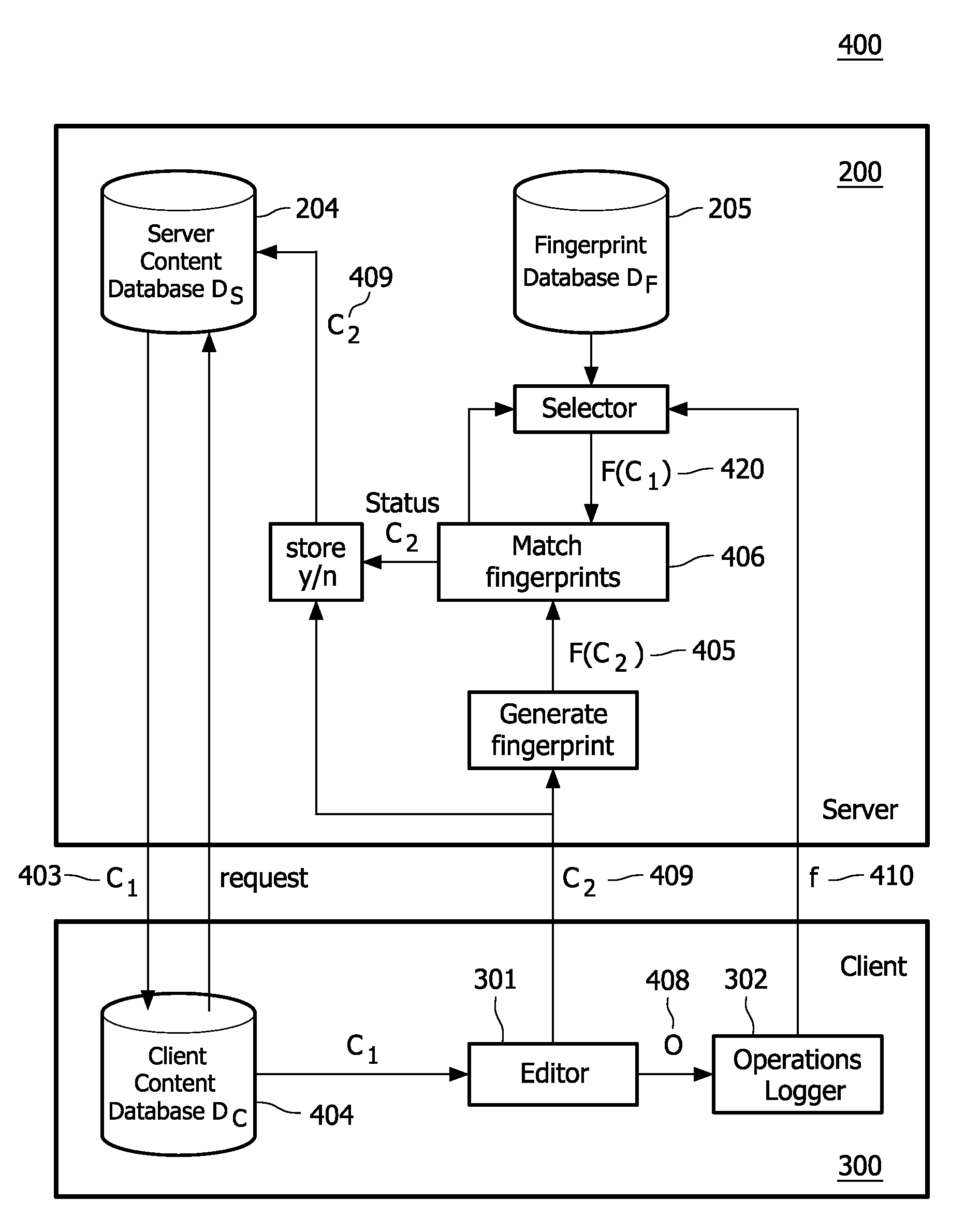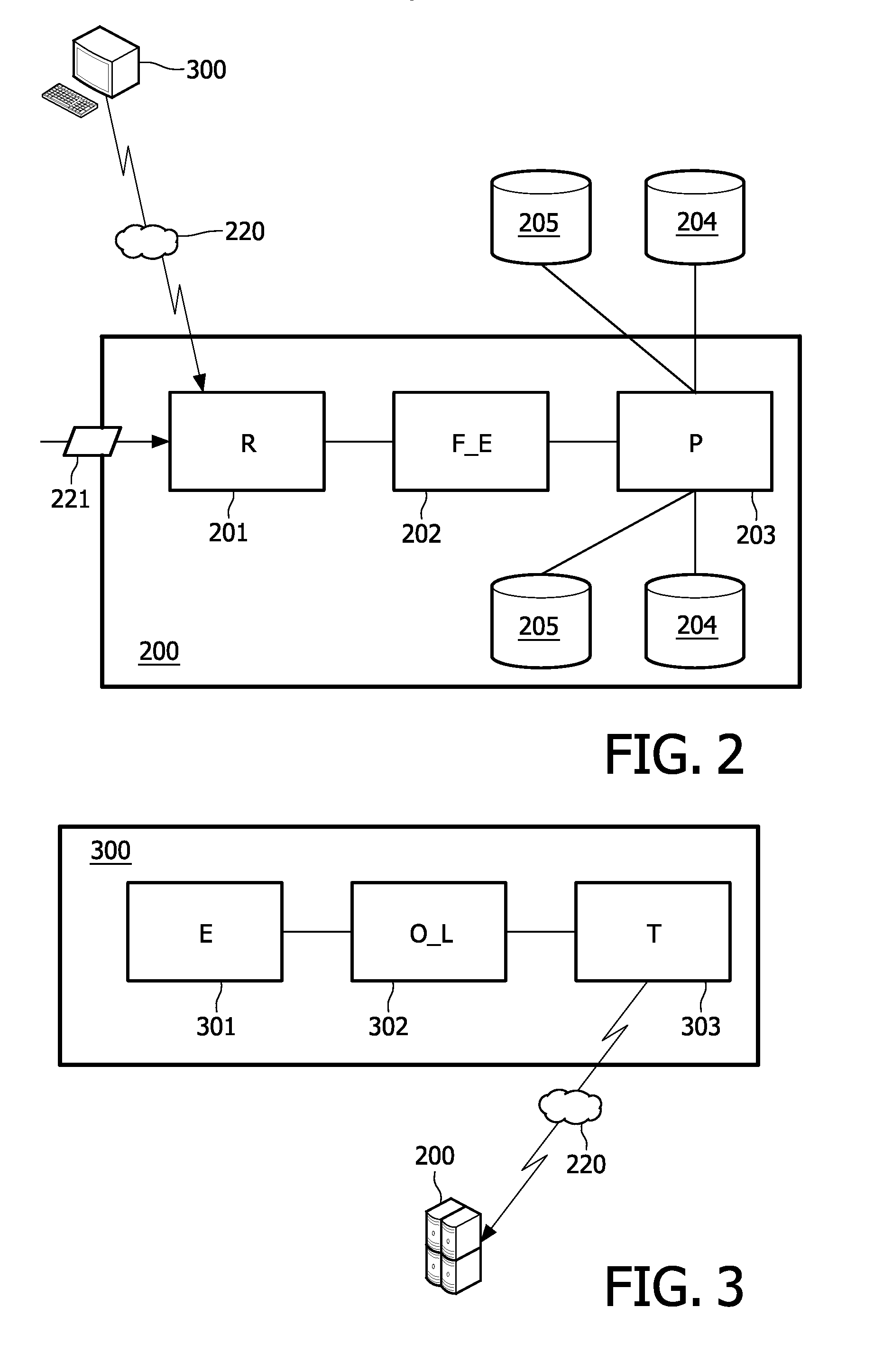Method and a system for identifying elementary content portions from an edited content
a technology for identifying elementary content and edited content, which is applied in the direction of selective content distribution, program/content distribution protection, instruments, etc., can solve the problems of deteriorating the performance of fingerprinting techniques, affecting the identification process etc., to achieve efficient computation of fingerprints and identification, facilitate the identification of elementary content portions, and simplify the identification process
- Summary
- Abstract
- Description
- Claims
- Application Information
AI Technical Summary
Benefits of technology
Problems solved by technology
Method used
Image
Examples
Embodiment Construction
[0042]FIG. 1 shows a flowchart of a method according to the present invention for identifying elementary content portions from an edited content. The term content may include audio, e.g. songs, movies or movie clips, audio associated to such movies, digital pictures / videos, and the like.
[0043]In step (S1) 101, the edited content is received along with a log, where the log indicates the elementary content portions used in the edited content. As an example of elementary content this document uses the movie “Pirates of the Caribbean”. In step (S2) 103, fingerprints are obtained from the elementary content portions as indicated in the log. This will be discussed in more details later.
[0044]In one embodiment, the log further specifies use instructions indicating operations performed on the elementary content portions, but these, but these use instructions may be implemented as input data in obtaining said fingerprints and said fingerprint comparison.
[0045]In one embodiment, the use instr...
PUM
 Login to View More
Login to View More Abstract
Description
Claims
Application Information
 Login to View More
Login to View More - R&D
- Intellectual Property
- Life Sciences
- Materials
- Tech Scout
- Unparalleled Data Quality
- Higher Quality Content
- 60% Fewer Hallucinations
Browse by: Latest US Patents, China's latest patents, Technical Efficacy Thesaurus, Application Domain, Technology Topic, Popular Technical Reports.
© 2025 PatSnap. All rights reserved.Legal|Privacy policy|Modern Slavery Act Transparency Statement|Sitemap|About US| Contact US: help@patsnap.com



